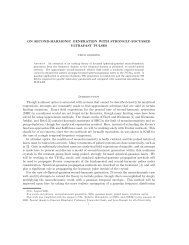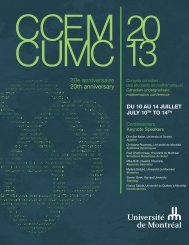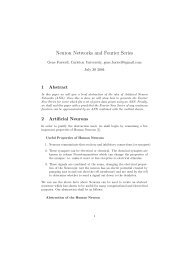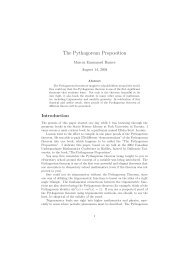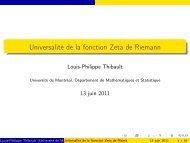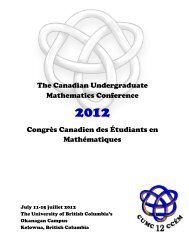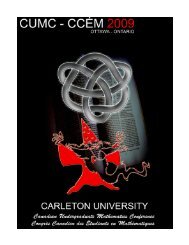booklet - CUMC - Canadian Mathematical Society
booklet - CUMC - Canadian Mathematical Society
booklet - CUMC - Canadian Mathematical Society
You also want an ePaper? Increase the reach of your titles
YUMPU automatically turns print PDFs into web optimized ePapers that Google loves.
MACHINE LEARNINGREGAN MELOCHEThe focus of this talk is Machine Learning, a subfield of Artificial Intelligence thatdeals with programming computers to learn from data with as little human interventionas possible. We can use matrices made of 1’s and 0’s to represent a concept class.An example could be a system that detects whether or not an email is spam or not. Thesystem is made up of a teacher (the programmer) and the learner (the computer). Theteacher gives labelled examples to the learner, and the learner constructs an algorithmthat is able to classify future unlabelled examples. The goal is to accomplish this byusing as little data as possible. This talk will discuss some of the challenges behind thisas well as some interesting applications.Required Background: Basic Linear AlgebraA MATHEMATICAL INVESTIGATION OF PLASMA MEMBRANE HETEROGENEITY.ROCHELLE NIEUWENHUISThe organization and movement patterns of cell surface proteins play a fundamentalrole in the cell’s ability to send and receive signals with its surroundings. <strong>Mathematical</strong>tools have been an invaluable asset in investigating the behaviours of suchproteins, and I will present two such approaches. To understand protein movement, atechnique called bootstrapping is used to evaluate whether protein movement trajectoriescan be described by a Correlated Random Walk model. Trajectories which do notfit this model often have more complicated movement patterns and the spatial scaleof heterogeneity within trajectories can be estimated via the variance in First PassageTime. <strong>Mathematical</strong> tools can also address distribution of proteins across the plasmamembrane, and in particular, Ripley’s K function describes the relative local density ofproteins, giving insight into cluster formation and colocalization.STATISTICAL METHODS FOR ANCESTRAL RECONSTRUCTIONROSEMARY MCCLOSKEYAncestral reconstruction aims to gather information about an extinct common ancestorto a group of present-day organisms. When the information of interest is thegenotype (DNA sequence), ancestral reconstruction typically involves two main steps:constrution of a phylogenetic tree, and the estimation of the ancestral sequence at theroot. We first give an overview of Bayesian Markov Chain Monte Carlo (MCMC) methodsfor inferring a phylogenetic tree. Such methods have recently become extremelypopular, both for their capacity to incorporate uncertainty in models of evolution, andfor their tractability on the increasingly large data sets generated by modern biology.We then illustrate the process of reconstructing the ancestral sequence by marginalmaximum likelihood. Finally, we briefly describe how these methods were used toinfer potential transmitted/founder HIV sequences.43



